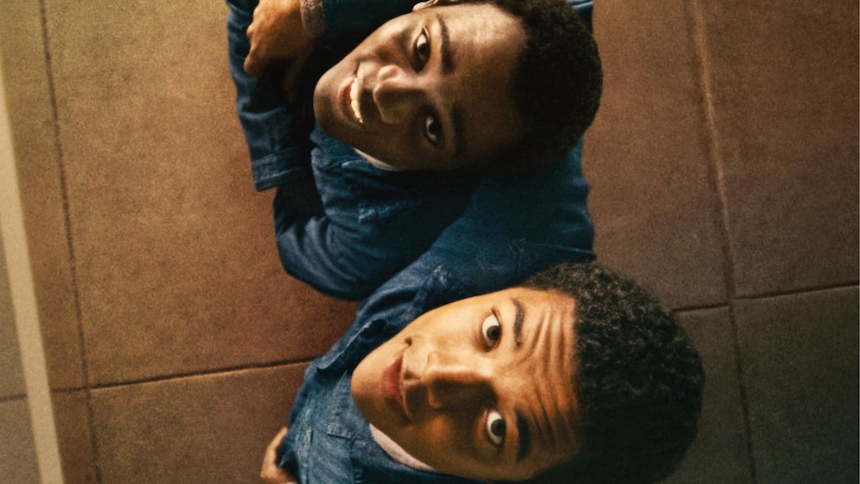RaMell Ross’ Nickel Boys, which is opening the 62nd edition of New York Film Festival, is bound to be both hailed and remembered as one of the most tremendous films of the year. Its reasons for such claims are plentiful. For the purpose of this column, we’ll focus on the partnership between co-writer/director Ross and cinematographer Jomo Fray. Nickel Boys, adapted from the Colson Whitehead novel of the same name, employs a first-person perspective for a majority of its runtime. At face value, this might be considered a gimmick. But that preconceived notion simply could not be any further from the truth. What Fray is able to achieve with this film is breathtaking. It’s a striking testament to pushing the boundaries of cinema and visual storytelling to its utmost potential. It’s the type of work that, quite frankly, deserves the Academy Award. It’s a technical feat that will receive loads of recognition over the next year and likely many years to come. But Fray won’t receive such praise simply because it’s so technically impressive. No. He will receive it because it defines the very language of Nickel Boys in such a way that it begs the question of what else can be done within the ever-expanding world of cinema.
When discussing the film, Ross cited some examples of films that utilize first-person point-of-view for reasons beyond what many imagine to be a gimmick. The two that sprung to mind are both stellar examples: Enter the Void (Gaspar Noé) and Strange Days (Kathryn Bigelow). These are both films that make the deliberate choice of blurring the line between camera lens and operating character. And it’s no surprise that these films and Nickel Boys have an emotional through-line that is directly connected to the stylistic choice being made. When watching a film, we can perceive ourselves as outside of it. Of course, everything we’re seeing is merely occurring in an image being projected onto a massive wall or one that’s beamed onto our screens. That’s easy for stories rooted in fiction. In stories based on true events, such as Nickel Boys, that line obviously becomes a bit more blurry. Even still, some viewers will have the ability to draw a distinct line between their own reality and the reality of the film they’re viewing. In the case of Nickel Boys, Fray and Ross choose to deliberately erase that line. And some of the ways they go about it are so exciting.
Take one of the most fundamental rules of filmmaking as the primary example: spiking the lens. One of the cardinal rules of cinema is to not look directly at the camera. Only in rare instances is it utilized to great effect. In Nickel Boys, it’s deliberately employed as a way to clue in the audience on how to engage with the film. These characters look directly into the lens when speaking to one another. Therefore, we begin to process the fact that the camera and the character are one and the same. We are seeing the world of Nickel Boys, the Nickel Academy, and all beyond it through the eyes of Elwood (Ethan Herisse) and Turner (Brandon Wilson). This sentiment is something that was echoed by Fred Hechinger, who plays Harper, when discussing the film and its blurring of roles. He made note of the unique ways the lead actors would take on the camera rig, functioning as director of photography and camera operator, while Fray would stand in for the lead actors at times. In a film where the camera’s point of view is designed to be one and the same as that of its characters, behind-the-scenes processes make the film feel realistic and all the more exciting. And what is this column for if not to highlight boundary-pushing achievements in cinematography? But what’s equally impressive is the prospect of how, despite all the technical obstacles to overcome, Ross and Fray are able to catch such beauty in a seamless manner.
It also helps that Fray’s imagery is absolutely gorgeous. Despite all the horror and injustice that Nickel Boys is centered around, Fray captures the world around Elwood and Turner with such a curious and appreciative eye. There are so many moments peppered throughout that one can imagine being left on the cutting room floor in a lesser film. In Nickel Boys, these moments amount to something greater. They serve as a reminder of the inherent beauty to be found in the random going-ons of life. A young Elwood sees two strangers in a store, both accidentally stepping in synchrony. The repeating patterns on a series of dresses. The color bars of a television are displayed through the store’s display window. Only then do we notice the reflection of young Elwood. Then, the strangers begin to form a group around him and watch whatever image will appear next. The extended keychain and accessories of a stranger he’s only just met. Nickel Boys also has a very specific framing device, and in many ways, all these moments and the stylistic choice of first-person POV feel as if they, too, lend themselves to the overarching sentiment of Fray’s work. These are the moments we find ourselves reflecting on after a lifetime.
It’s not until about a third of the way through Nickel Boys that Fray again changes the visual language of the film. Even so, it’s always of a whole with everything that precedes that follows. There is a shift in perspective. A camera rig was set up on the back of the great actor Daveed Diggs, and any section of the film was shot from behind his back. It takes the form of a 3rd person’s point-of-view but is far more connected to the subject than traditional camerawork. All of a sudden, certain cutaways throughout the film begin locking into place. Rather than simply being presented as archival footage, these cutaways operate as flashbacks: glimpses into the neural firings of a protagonist thinking back on life. This switch-up of camerawork also serves a narrative purpose. We are seeing a literal display of a person who has found themselves disconnected from the reality in front of them. As they begin to process the traumatic memories of their past through breaking news or bumping into familiar faces, Fray’s visuals send chills through the audience. It’s a devastating revelation made all the more heartbreaking by the events of the story itself. To see such beauty captured in the face of such horrors, only to then shift the visual language of the film into a literal disconnection and isolation of the world, is a massive swing that pays off exponentially with each new scene. Nickel Boys is achingly intimate, yet throughout its runtime, Ross and Fray remind us that this is but one of countless experiences we have lived. It is an absolute triumph of a film in every way.
Nickel Boys is the Opening Night film of the 62nd edition of New York Film Festival.







